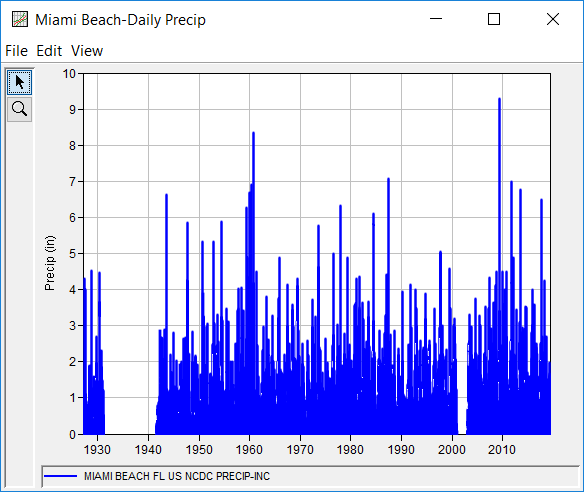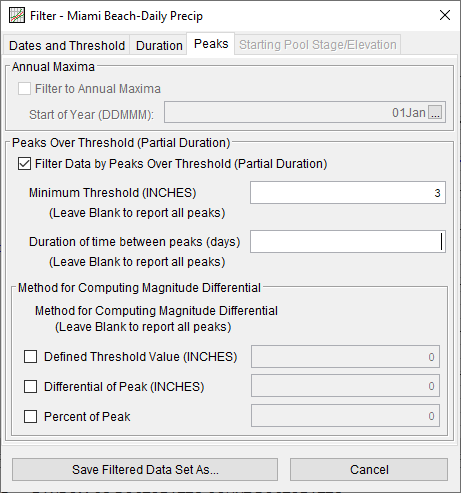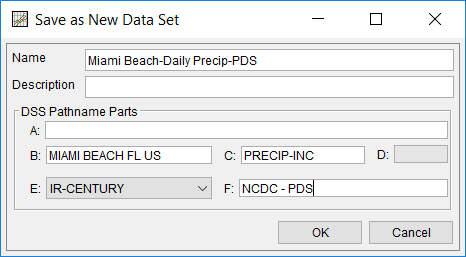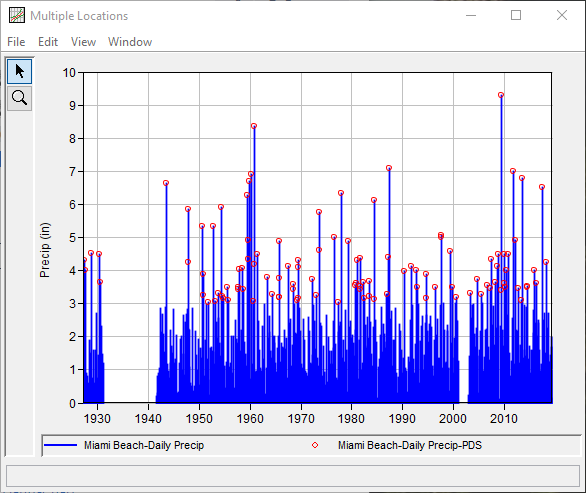This example demonstrates how to extract a partial duration series from another time series. The original data for this example consists of daily precipitation accumulations as recorded by a precipitation gage located near Miami Beach, FL. This precipitation gage is operated by the NWS. Daily precipitation data was downloaded from the NWS website ("https://www.ncdc.noaa.gov/") as a .csv file and ingested to the study using an HEC-DSSVue plugin. The period of record used for this example is from 1927 to 2019. To view the data from HEC-SSP, right-click on the data record labeled "Miami Beach-Daily Precip" in the study explorer and then select Plot. A plot of the data will appear as shown in Figure 1.

To begin extracting an annual maximum series, right click on the Miami Beach-Daily Precip data record and select Filter Data. Within the Filter editor, click on the Peaks tab. Within the Peaks Over Threshold (Partial Duration) panel, click the Filter Data by Peaks Over Threshold (Partial Duration) check box and enter a Minimum Threshold of 3 inches. Additionally, delete the contents of the Duration of time between peaks entry field, as shown in Figure 2.

After clicking the Save Filtered Data Set As button, enter a Name of "Miami Beach-Daily Precip-PDS", ensure the E-part is set to IR-CENTURY, and the F-Part is defined as "NCDC – PDS", as shown in Figure 3.

After clicking the OK button, a new data set will be added to the study. Out of the original 28481 values, 109 values remained after applying the aforementioned data filter. These 109 peak values constitute a partial duration series of daily precipitation accumulations in excess of 3 inches. The original data as well as the filtered data is shown in Figure 4.
